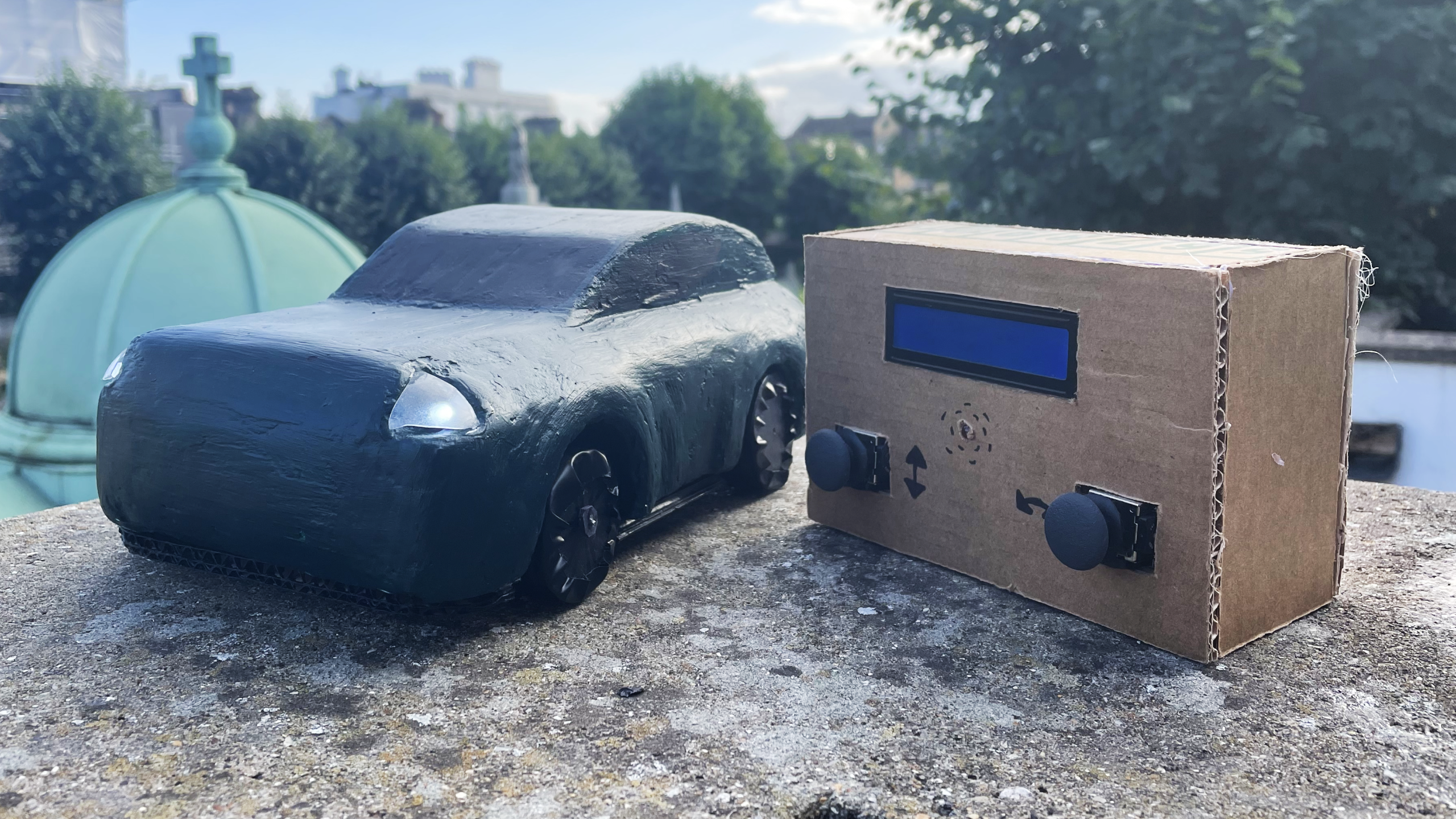Features & Interface Flow
There are 4 main screens within this web-app, with the ribbon of the left of every page allowing easy navigation between them. The first page that the user lands on is the About page, which gives users with no experience in ROA background information, along with general instructions on the tool's capabilities, and how to use it.
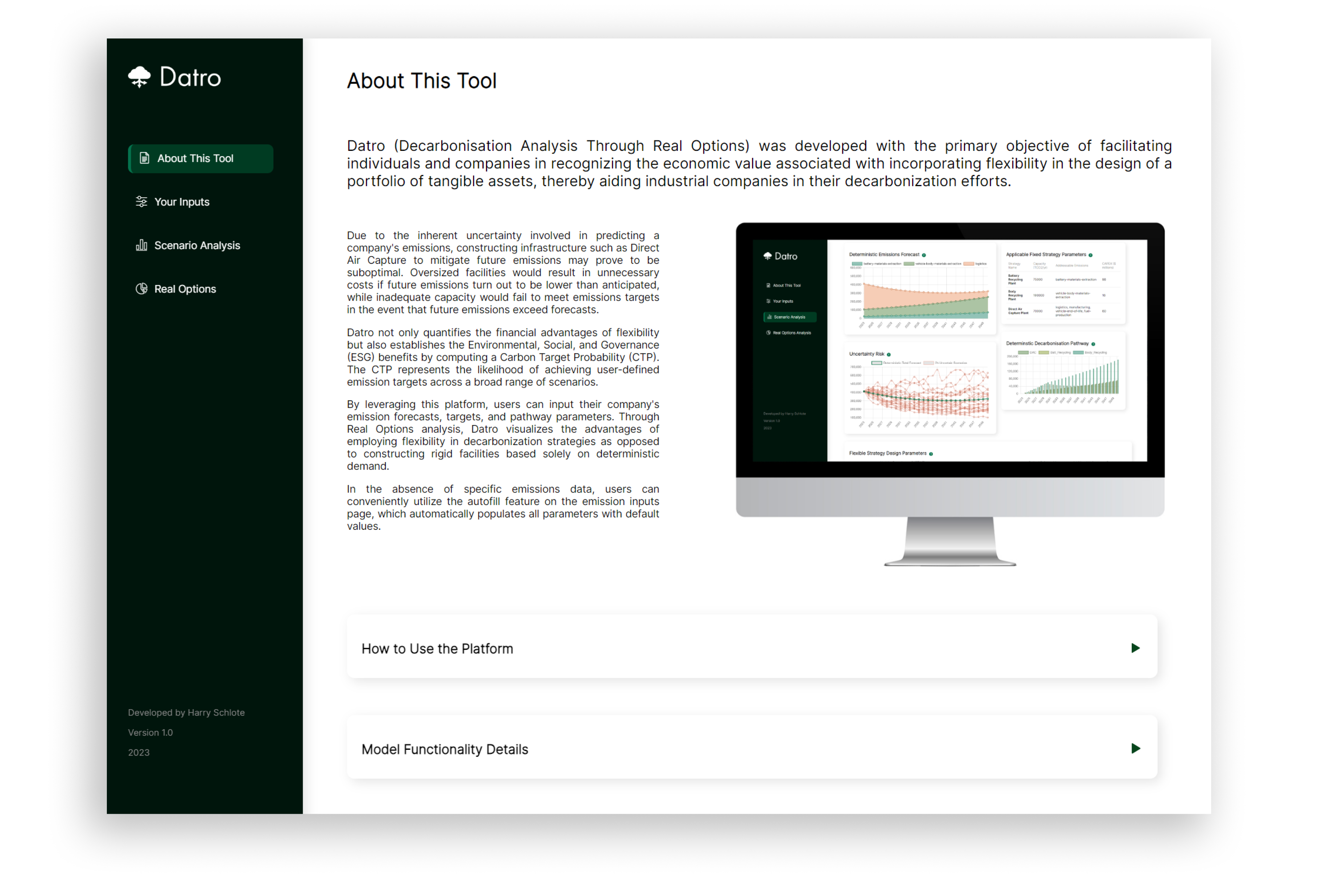 Figure 1. About page within DATRO
Figure 1. About page within DATRO
For the 'Your Inputs' page there are 3 main sections. The first allows users to input different emission sources, and their corresponding quantity, scope, and forecast growth. The user can also input overall emissions/company growth and the level of volatility in forecasts. The second section is for study parameters such as the start and end years, the Carbon Target Probability Threshold (CTPT), and the discount rate. The third section is to input targets and corresponding scope which is important for companies that have different targets for different scopes. There is also an autofill button which allows the section to be filled with the data used in this case study.
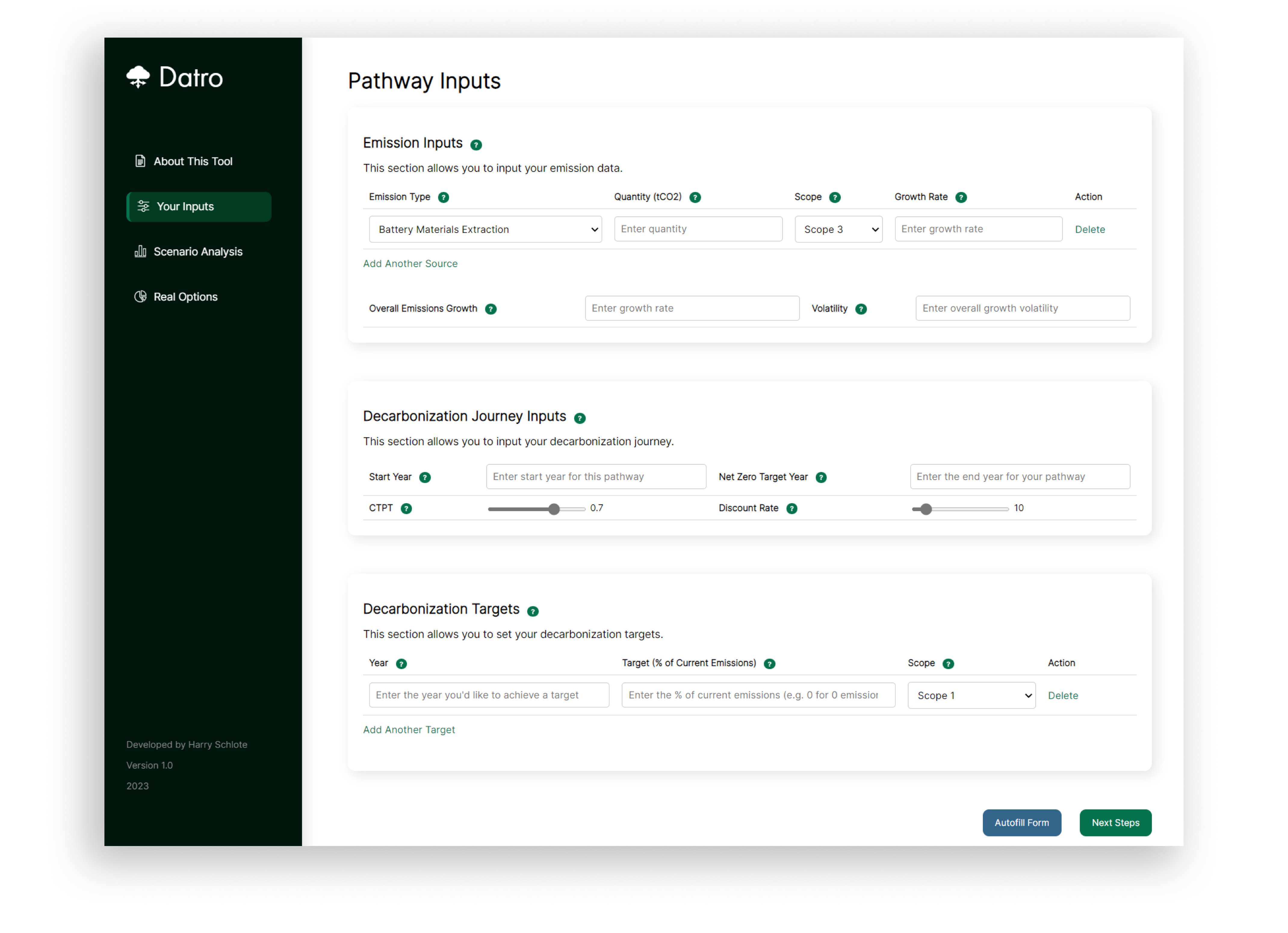 Figure 2. Your Inputs page within DATRO
Figure 2. Your Inputs page within DATRO
The Scenario Analysis page shows the best strategies to reduce emissions, as well as the forecasts of emissions and volumes assigned to each strategy based on the targets. It also visualises uncertainty in forecasts and suggests flexible design alternatives for each strategy to mitigate this risk.
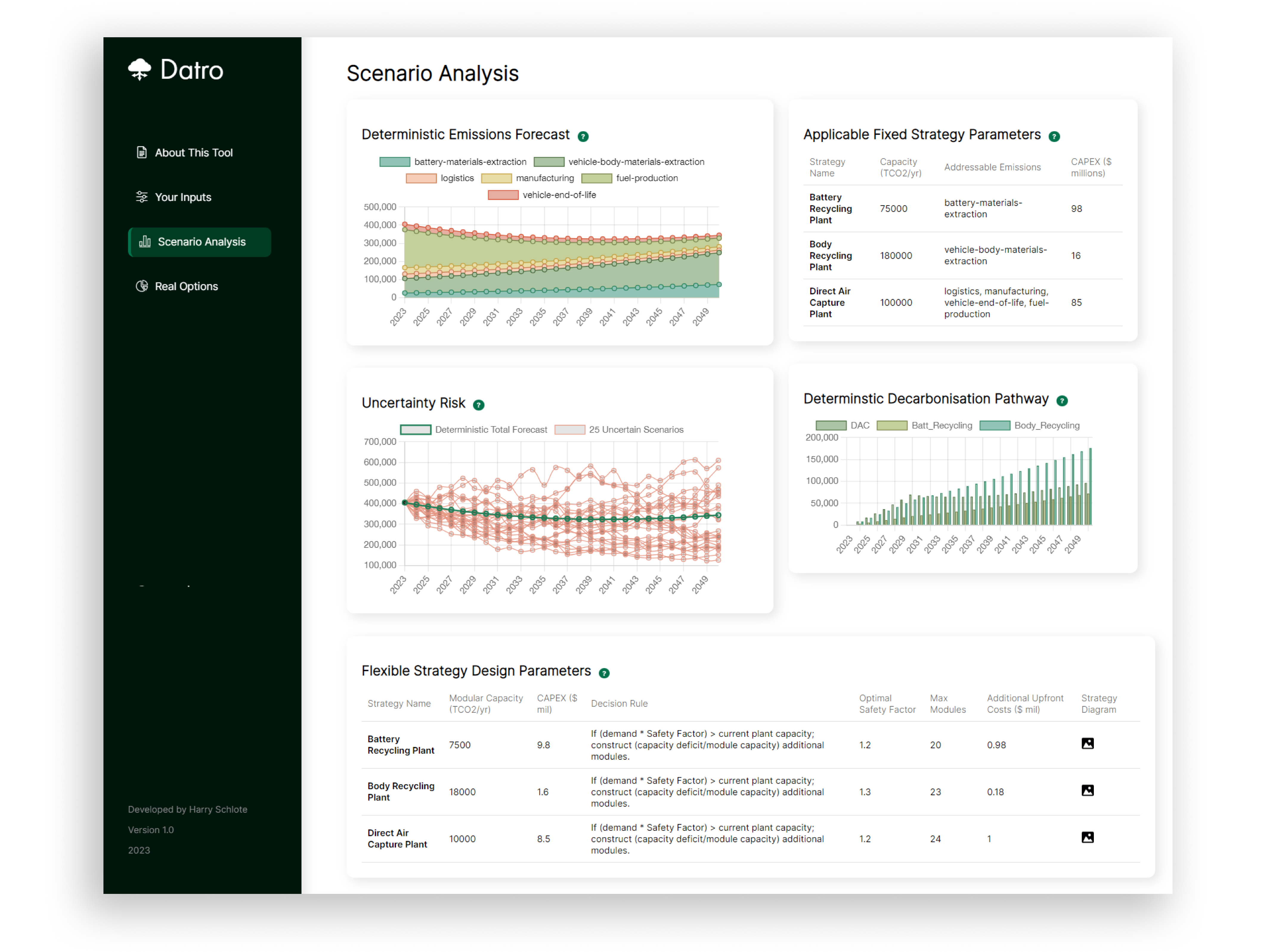 Figure 3. Scenario Analysis page within DATRO
Figure 3. Scenario Analysis page within DATRO
After viewing the scenario and strategies, the Real Options page compares the economic performance of the fixed and flexible strategies, as well as the CTP differences. It also displays the trade-space for the different combinations of strategy and shows the trade-off between Expected Net Present Value or greater CTP.
Due to the complexity of the model, there is also a loading screen page which notifies the user of the expected wait time and indicates when the simulations have finished running.
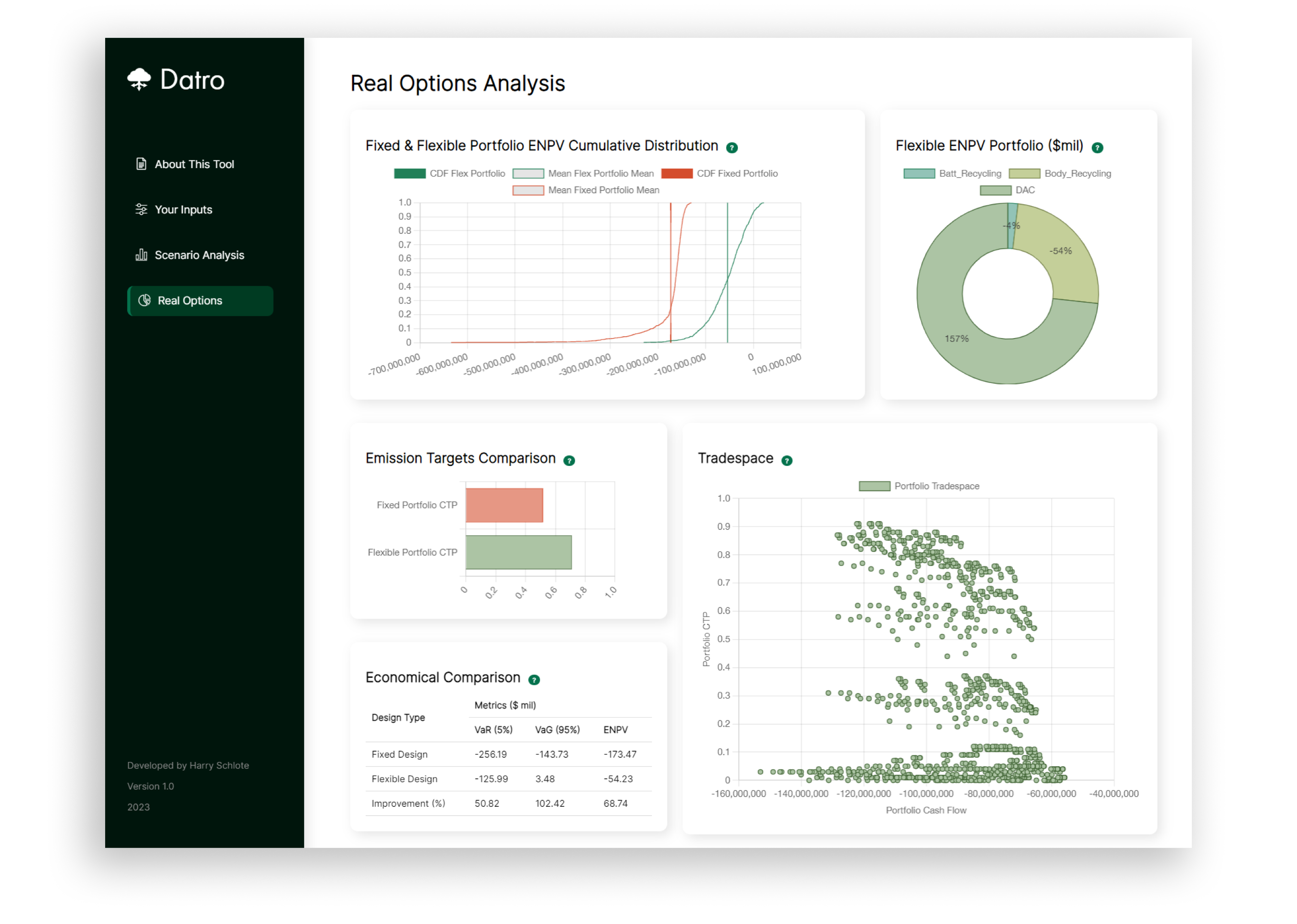 Figure 4. Real Options page within DATRO
Figure 4. Real Options page within DATRO
To ensure the tool was usable for non-specialist decision-makers, in addition to the 'About' page, the tool also includes 'Info Tooltips', which, when hovered over, provide information to the user about every feature in the tool. DATRO has also been developed with the potential to run offline without the requirement of online servers, eliminating concerns about data privacy that companies may have when inputting confidential data into the tool.
Feedback & Further Development
To validate that this tool was useful to companies in early-stage planning and helpful in visualizing the value of flexibility, initial testing sessions were held with a small number of stakeholders from sustainability consultancies and industrial sector corporations. The feedback was positive, with employees describing the platform as a "very visual way to engage with complexity around decarbonization," and that "as a storytelling tool, it's also very compelling."
Feedback on how to further improve the platform focused mostly on the range of possible inputs, such as the remark that it "would be useful to have more industry-specific emission sources," as there are only a limited number of emission source choices and strategy suggestions in the prototype version of DATRO.
 Figure 1. About page within DATRO
Figure 1. About page within DATRO
 Figure 2. Your Inputs page within DATRO
Figure 2. Your Inputs page within DATRO
 Figure 3. Scenario Analysis page within DATRO
Figure 3. Scenario Analysis page within DATRO
 Figure 4. Real Options page within DATRO
Figure 4. Real Options page within DATRO


